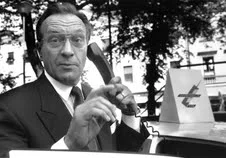
On July 1, 1991 the world’s first GSM call on a commercial network was made between Finland’s former prime minister Harri Holkeri and vice mayor of the city of Tampere Kaarina Suonio.
The first GSM network was built by Telenokia and Siemens today’s Nokia Siemens Networks for the Finnish operator Radiolinja, now operating under the name Elisa.
During the call, Harri Holkeri and Kaarina Suonio discussed the benefits of the new, digital, GSM technology, including superior voice quality and security, and the fact that the phone’s identity is in the SIM card, making it easy for consumers to choose the product they like.
The Global System for Mobile communications (GSM) was adopted in 1987 as the European standard for digital mobile technology. This second generation mobile technology could carry data as well as voice traffic. GSM’s high-quality voice calls, easy international roaming and support for new services such as text messaging (SMS) laid the foundations for a worldwide boom in mobile phone use.
The GSM family of technologies, standardized by 3GPP, has evolved further to EDGE, 3G and LTE. Third generation 3G WCDMA networks have higher data speeds and more capacity for mobile broadband services.
LTE, already in commercial operation in over 20 networks worldwide, marks the next step in technology evolution. The main driver for LTE is the rapidly growing need for data capacity for mobile broadband services.
GSM, 3G and LTE are evolutionary technologies, with networks being built and expanded according to the needs of coverage and capacity, with seamless interworking between the technologies.
Nokia Siemens Networks technology directly supports 2.9 billion subscribers – almost half of the world’s population – in 365 GSM networks in 143 countries.
Nokia introduced its first digital handheld GSM phone, the Nokia 1011, in 1992. Other iconic models have included the Nokia 2110, while the most popular model has been the Nokia 1100, of which more than 250 million have been sold.
Pekka Soini, head of corporate development office at Nokia Siemens Networks quoted GSM was the first digital technology based on open standards and one that made the widespread adoption of mobile phones possible,”















